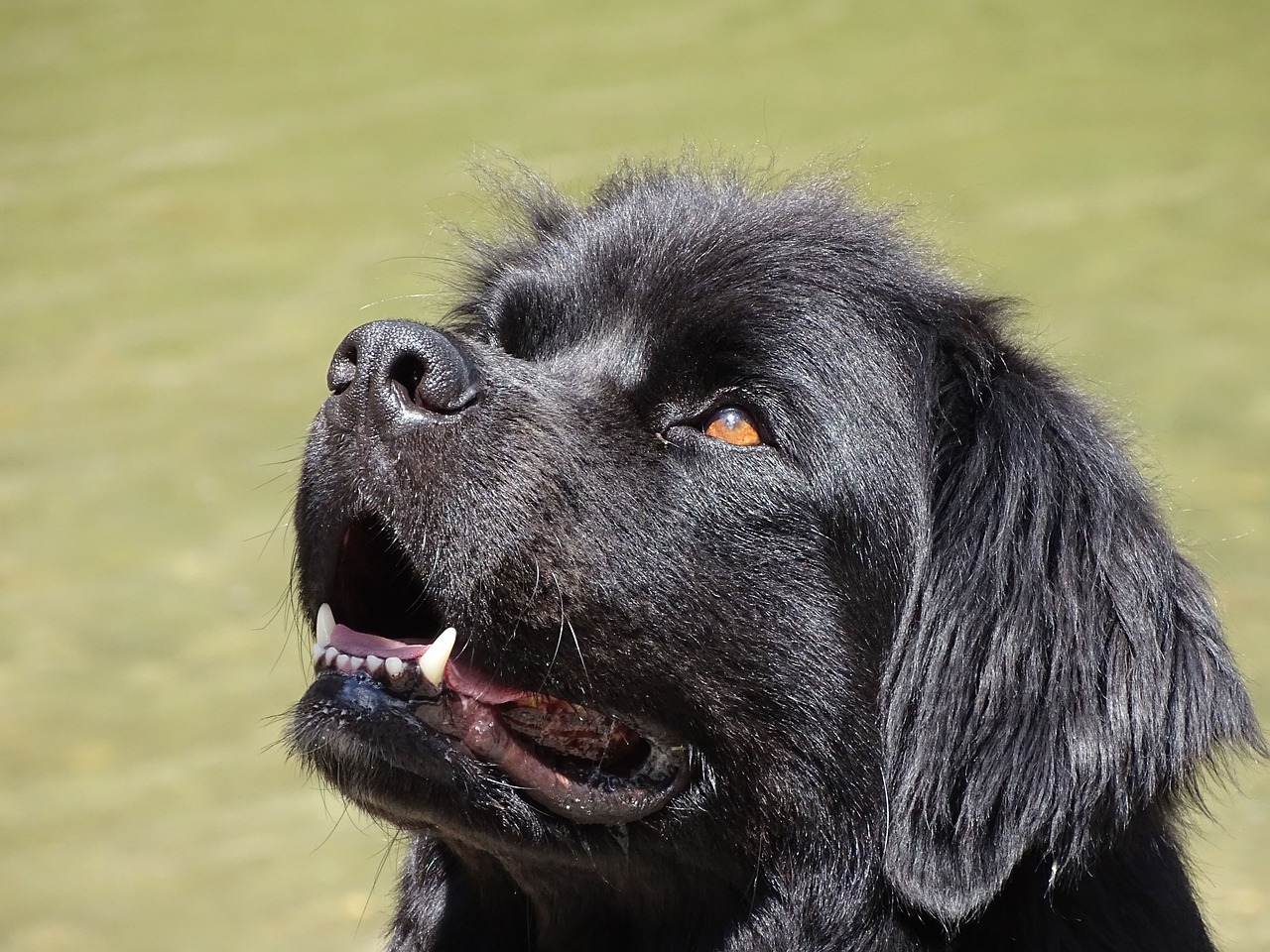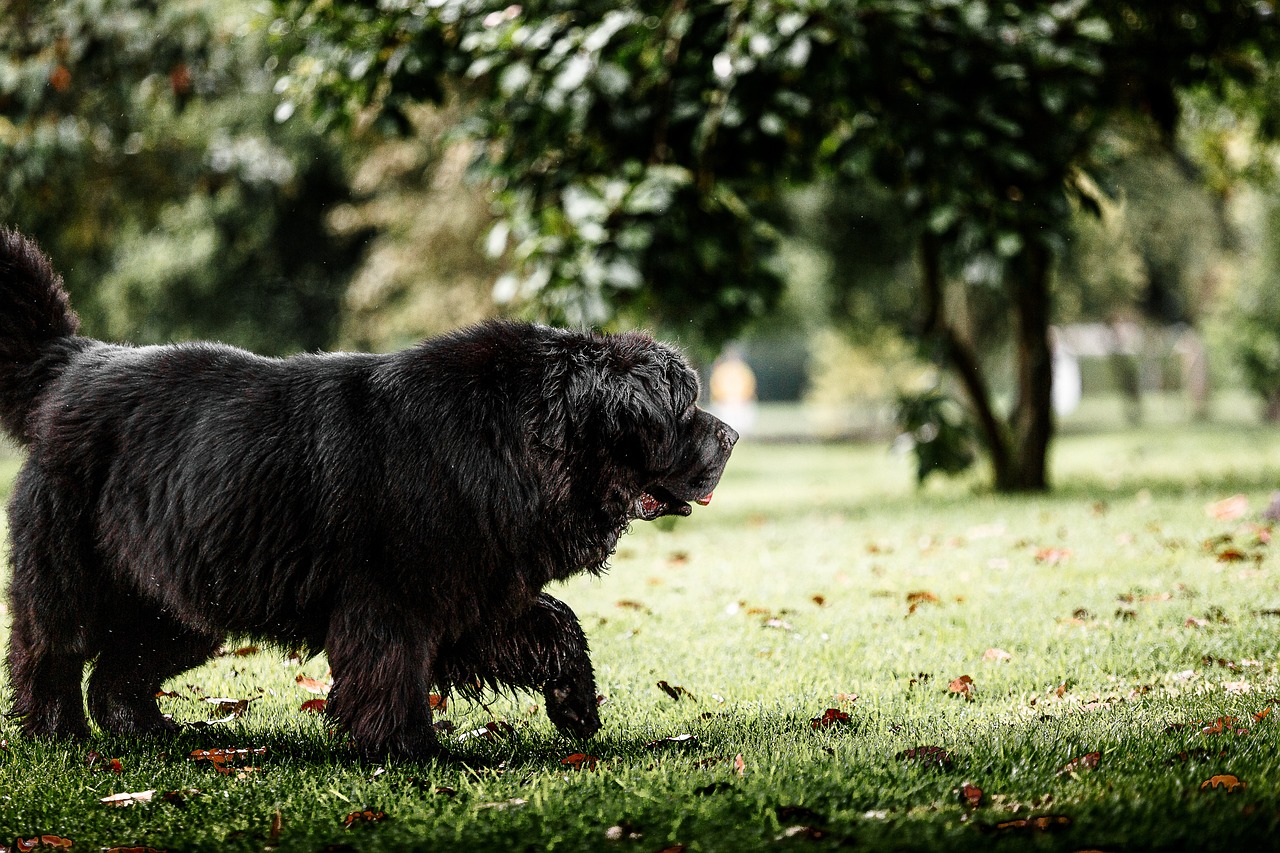The Newfoundland dog, with its impressive size, gentle demeanor, and legendary swimming ability, is a breed that has captured the hearts of dog lovers around the world. Originating from the rugged, cold island of Newfoundland in Canada, this breed has a storied history that intertwines with the lives of fishermen and communities who have depended on these gentle giants for assistance in water rescues and as working dogs. Known for their immense strength, loyalty, and natural lifesaving instincts, Newfoundlands have played a crucial role in maritime history, earning them a revered place in the annals of dog breeds. Beyond their working capabilities, Newfoundlands are cherished as family pets, known for their sweet temperament and affectionate nature towards children. This article delves into the rich history and origin of Newfoundland, exploring how this breed has evolved from a working dog to a beloved companion.

The Early History
The Newfoundland’s origins can be traced back to the island of Newfoundland, now part of Canada, where they were bred by the indigenous Beothuk and later by European settlers. These early Newfoundlands were used primarily by fishermen, who valued the dogs for their incredible strength, swimming ability, and capacity to perform water rescues. The breed likely resulted from the crossbreeding of indigenous Canadian dogs and working dogs brought over by European fishermen, primarily from Portugal and England. Over time, these dogs were refined into the Newfoundland breed known today, capable of enduring the harsh Atlantic environment and aiding in the demanding work of coastal communities.
Development and Roles
Throughout the 18th and 19th centuries, Newfoundlands distinguished themselves not only as adept swimmers and rescuers but also as capable draft dogs. They were employed to haul nets for fishermen, carry loads over the rugged terrain, and even pull carts in urban settings. Their reputation as lifesaving dogs was cemented by numerous accounts of Newfoundlands saving sailors and swimmers from drowning, a testament to their natural affinity for water and unyielding bravery. The breed’s working roles expanded beyond maritime duties, showcasing their versatility and intelligence in various tasks.
The Breed’s Characteristics
Newfoundlands are notable for their large size, with males typically weighing between 130 to 150 pounds, and females slightly smaller. They possess a thick, water-resistant double coat, webbed feet, and a powerful, muscular build, all of which equip them for their historical work in cold, aquatic environments. Beyond their physical attributes, Newfoundlands are renowned for their gentle and patient temperament. They are known as “gentle giants” for their kind nature, especially towards children, making them excellent family pets. The breed’s intelligence and trainability have also made them well-suited for roles in therapy and service work.
The Newfoundland Today
Today, the Newfoundland is celebrated both as a working dog and a loyal companion. While their roles in fishing and maritime rescue have diminished, they continue to participate in water rescue demonstrations and competitions, showcasing their natural abilities. Newfoundlands are also beloved family members, appreciated for their protective instincts, affectionate nature, and compatibility with children. Breed enthusiasts and clubs worldwide are dedicated to preserving the health and temperament of Newfoundland, ensuring that these magnificent dogs continue to thrive in various roles.
The Newfoundland’s journey from the rugged shores of Canada to the hearts of families around the globe is a testament to the breed’s enduring appeal. These gentle giants have played a significant role in maritime history, saved lives, and provided unwavering companionship. The Newfoundland’s combination of strength, courage, and kindness exemplifies the profound bond between humans and dogs, making them not only a breed of remarkable physical capabilities but also of immense heart and loyalty.
Frequently Asked Questions About The History of Newfoundlands

1. What is the origin of the Newfoundland dog breed?
The Newfoundland dog breed originates from the island of Newfoundland, now part of Canada. Its lineage is believed to be a result of indigenous dogs of the island mixed with large working dogs brought over by European fishermen, primarily from Portugal and the British Isles, in the 16th and 17th centuries. These early dogs were bred for their strength, swimming ability, and gentle temperament, traits that were essential for the demanding work in the harsh, cold Atlantic environment. They were used by local fishermen to haul nets and catch escaping fish, and their excellent swimming abilities made them invaluable for water rescues.
2. How did the Newfoundland dog get its name?
The Newfoundland dog is named after its place of origin, the island of Newfoundland in Canada. The breed was developed and utilized by the inhabitants of Newfoundland for various tasks, including pulling nets for fishermen, hauling wood from the forest, and performing water rescues. As the breed’s reputation grew, particularly for its water rescue abilities, it retained the name of its homeland, becoming universally recognized as Newfoundland.
3. What were the original purposes of Newfoundland dogs?
Originally, Newfoundland dogs served several purposes, all of which leveraged their strength, stamina, and affinity for water. They were employed by fishermen to help haul nets and catch fish that escaped from fishing lines. On land, they were used to pull carts and carry heavy loads, such as timber, due to their powerful build. Their most renowned role, however, was performing water rescues, a task for which they were naturally suited thanks to their muscular build, webbed feet, and thick, water-repellent coat.
4. Are there any famous historical accounts of Newfoundland dogs performing rescues?
Yes, there are numerous historical accounts of Newfoundland dogs performing heroic rescues. Perhaps one of the most famous is the story of a Newfoundland named Seaman, who accompanied Lewis and Clark on their expedition across America in the early 1800s. Seaman reportedly saved lives by guarding the camp from bears and fetching game shot by hunters. Another notable Newfoundland was “Bob,” who reportedly saved more than 20 people from drowning. These stories highlight the breed’s instinct for water rescue and their unwavering bravery.
5. How did Newfoundland dogs contribute to water rescue operations?
Newfoundland dogs have contributed to water rescue operations with their remarkable swimming ability, strength, and instinctive rescue behavior. Their thick, water-resistant coat, webbed feet, and powerful build allow them to swim long distances in cold water. Newfoundlands are known to perform a distinctive swim stroke, the “dog paddle,” which, combined with their calm demeanor, makes them excellent at rescuing individuals in distress without causing panic. Throughout history, these dogs have been credited with saving numerous lives from drowning, demonstrating their inherent life-saving skills.
6. What physical characteristics make Newfoundland’s excellent swimmers?
Newfoundlands possess several physical characteristics that make them excellent swimmers. They have a large, muscular build, providing the strength needed for swimming in rough waters. Their coat is thick and water-resistant, offering protection against cold temperatures. Webbed feet are another distinctive feature that aids in swimming, allowing them to paddle through water more efficiently. Additionally, their broad chest and strong limbs give them the power to navigate strong currents, making them natural water rescuers.
7. How has the role of the Newfoundland dog evolved?
The role of the Newfoundland dog has evolved significantly over time. Initially bred for work in harsh conditions, assisting fishermen, and performing water rescues, the Newfoundland has transitioned into a versatile breed capable of serving in various capacities. Today, while they may no longer be commonly used in their traditional working roles, Newfoundlands participate in water rescue demonstrations and competitions, serve as therapy and service dogs, and are cherished family pets. Their gentle nature and intelligence have made them well-suited to modern roles that require empathy and understanding.
8. When was the Newfoundland dog breed officially recognized?
The Newfoundland dog breed was officially recognized in the late 19th century. The American Kennel Club (AKC) recognized the Newfoundland as one of its earliest official breeds in 1886. This recognition was a significant milestone that helped standardize the breed, distinguishing it by its size, temperament, and working ability. The establishment of breed standards allowed for the Newfoundland’s qualities to be preserved and promoted, ensuring its continued popularity and breeding integrity.
9. What are the common health issues in Newfoundland dogs?
Newfoundland dogs, like many large breeds, are prone to certain health issues. These include hip and elbow dysplasia, heart conditions such as subaortic stenosis, and cystinuria, a kidney-related condition that can lead to stone formation. They can also be susceptible to gastric torsion, commonly known as bloat, which is a life-threatening emergency. Regular veterinary check-ups, a balanced diet, and appropriate exercise can help manage these health risks and contribute to Newfoundland’s overall well-being.
10. What is the lifespan of a Newfoundland dog?
The lifespan of a Newfoundland dog typically ranges from 8 to 10 years. While this may seem short compared to some smaller breeds, it is relatively common among larger dog breeds. Factors such as genetics, diet, exercise, and regular veterinary care can influence Newfoundland’s health and longevity. Providing a loving, nurturing environment also plays a crucial role in ensuring the quality of life for these gentle giants.
11. Are Newfoundland dogs good with children?
Newfoundland dogs are renowned for being exceptionally good with children. Their gentle and patient nature makes them excellent companions for families. Newfoundlands are known as “nanny dogs” for their protective instincts and ability to interact with children calmly and safely. However, due to their large size, interactions should always be supervised, especially with very young children, to ensure the safety of both the child and the dog.
12. How do Newfoundland dogs fare in hot climates?
Due to their thick, water-resistant coat and large size, Newfoundland dogs can struggle in hot climates. They are prone to overheating and heatstroke in high temperatures. If living in a warmer environment, it’s important to provide them with plenty of shade, water, and air-conditioned spaces. Avoiding vigorous exercise during the hottest parts of the day and using cooling vests or mats can also help keep Newfoundland comfortable in warmer weather.
13. What grooming needs do Newfoundland dogs have?
Newfoundland dogs require regular grooming to maintain their thick, double coat. They should be brushed several times a week to prevent matting and reduce shedding. Bathing should be done as needed, typically every few months, unless the dog gets particularly dirty. It’s also important to regularly check and clean their ears, trim their nails, and brush their teeth to prevent dental issues. Due to their size and coat, grooming a Newfoundland can be time-consuming but is essential for their health and comfort.
14. How much exercise does a Newfoundland dog need?
Newfoundland dogs require moderate exercise to maintain their health and happiness. Despite their size, they do not have high energy levels but benefit from regular, gentle walks and the opportunity to swim, which is a great form of exercise for this breed. Playtime in a secure, fenced area can also provide mental stimulation. Care should be taken not to over-exercise young Newfoundlands, as their joints and bones are still developing.
15. What are the different color variations of Newfoundland dogs?
Newfoundland dogs come in several color variations, including black, brown, gray, and white-and-black (sometimes referred to as Landseer after the famous painter Sir Edwin Landseer who depicted them in his works). The most common color is solid black, but all colors are accepted by breed standards, depending on the kennel club. The variation in coat color does not affect the Newfoundland’s temperament or health, but it can sometimes influence breeding and show standards.
 Toledo, United States.
Toledo, United States.